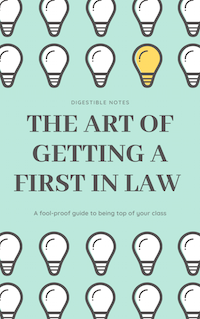Assault and Battery cases
R v Burstow [1997] UKHL 34
Facts: The defendant had a brief relationship with a woman She ended the relationship and he could not accept her decision and embarked on a campaign of harassment against her over a period of 8 months. He made silent telephone calls, abusive telephone calls, he appeared at her house, took photos of her, distributed offensive cards to her neighbours and hate mail. As a result she suffered a severe depressive illness.
Held: It was held psychiatric injury could amount to bodily harm: the dicta in R v Chan-Fook was applied.
C v Eisenhower [1984] 3 All ER 23
Facts: The defendant shot an airgun at a group of people. He hit someone just below the eye, causing bruising, but not breaking the skin. One blood vessel at least below the skin burst.
Held: His conviction was set aside. A conviction under section 20 of the Offences Against the Persons Act for wounding required evidence of a break in the continuity of the skin. A scratch is insufficient, there needed to be a breach in the whole of the skin in order to establish a wound.
R v Chan-Fook [1994] 1 WLR 689
Facts: The defendant subjected the victim to questioning about the theft of a ring belonging to the defendant's fiancée. The defendant then dragged the victim upstairs to a room and locked him in. The victim feared the defendant's return and injured himself when he fell through a window.
Held: The defendant was not guilty. To amount to actual bodily harm, the injury need not be permanent but should not be so trivial as to be wholly insignificant. Feelings of fear and panic are emotions rather than an injury and without medical evidence to support recognised psychiatric condition a conviction for ABH could not stand.
Collins v Wilcock [1984] 3 All ER 374
Facts: A police woman took hold of a woman's arm to stop her walking off when she was questioning her. The woman scratched the police woman and was charged with assaulting a police officer in the course of her duty.
Held: The police woman's actions amounted to a battery. The defendant's action was therefore in self defence and her conviction was quashed.
- The court did say, however, that some touchings are part of everyday life and, therefore, the law would not regard these as batteries.
The Art of Getting a First in Law - ONLY £4.99
FOOL-PROOF methods of obtaining top grades
SECRETS your professors won't tell you and your peers don't know
INSIDER TIPS and tricks so you can spend less time studying and land the perfect job
We work really hard to provide you with incredible law notes for free...
The proceeds of this eBook helps us to run the site and keep the service FREE!

R v Dica [2004] 3 ALL ER 593
Facts: The defendant was told that he was HIV positive. He proceeded to have unprotected sex with two women.
Held: The defendant was liable under section 20 of the Offences Against the Person Act for inflicting grievous bodily harm. Recklessly having unprotected sex after HIV diagnosis, resulting in the infliction of really serious harm (HIV), is enough to constitute a section 20 conviction.
R v Donovan [1934] KB 498
Facts: The defendant caned a 17-year-old girl, with her consent, for sexual pleasure.
Held: The defendant was not guilty of causing actual bodily harm.
DPP v K (a minor) [1990] 1 WLR 1067
Facts: A 15 year old school boy took some acid from a science lesson. He placed it into a hot air hand drier in the boys' toilets. Another pupil came into the toilet and used the hand drier. The nozzle was pointing upwards and acid was squirted into his face causing permanent scars. The defendant was charged under s.47 Offences Against the Persons Act 1867.
Held: The application of force need not be directly applied to be guilty of battery.
DPP v SMITH [2006] EWHC 94
Facts: The defendant's ex-girlfriend went round to his house whilst he was asleep in bed. She went up to his bedroom and woke him up. He pushed her down on to the bed, sat on top of her and cut off her hair which was in a pony tail. He did not physically cause any harm to her, other than the cutting of the hair. She sustained no bruises, scratches or cuts. Whilst she was emotionally upset and distressed by the experience there was no evidence or suggestion of psychiatric injury.
Held: The cutting of hair amounted to actual bodily harm.
R v Dume [1986]
Facts: The defendant maliciously wounded a police officer by releasing his dog and told it to "kill that man". The dog went up to the claimant, knocked him over, and bit him on the leg. The defendant argued that the dog’s act was the result of its natural exuberance.
Held: It was an assault for the defendant to threaten to set an animal on the victim.
Fagan v MPC [1969] 1 QB 439
Facts: A policeman was directing the defendant to park his car. The defendant accidentally drove onto the policeman's foot. The policeman shouted at him to get off. The defendant refused to move.
Held: Fagan committed an assault. Although there was no intent in parking on the foot of the officer, the omission to move was an intentional, therefore the omission was classed as an act.
Haystead v DPP [2000]
Facts: A baby’s mother was punched by a police officer; resulting in the baby being dropped.
Held: The police officer was found guilty of battery.
R v Ireland [1998] 3 WLR 534
Facts: Robert Ireland made a large number of telephone calls to three women. When they answered he remained silent. The women as a result suffered psychological harm. He pleaded guilty to a charge of assault occassioning actual bodily harm, contrary to section 47 of the Offences Against the Person Act 1861, following he direction of the trial judge that the facts of the case could justify such a conviction. He appealed on the basis that the admitted facts were incapable of amounting to the offence.
Held: His conviction was upheld. Silence can amount to an assault and psychiatric injury can amount to bodily harm.
R v Konzani [2005] EWCA Crim 706
Facts: Konzani was convicted of inflicting grievous bodily harm on three different women, contrry to section 20 of the Offences Against the Person Act. He had been warned that the was HIV positive and was aware of the risk that by having unprotected sexual intercourse he could infect his partners. Nevertheless he had sexual relations with three women without informing them of his HIV status.
Logdon v DPP [1976] Crim LR 121
Facts: The defendant pointed an imitation gun at a woman in jest. She was terrified. The defendant then told her it wasn't real.
Held: An assault had been committed as the victim had apprehended immediate unlawful personal violence and the defendant was reckless as to whether she would apprehend such violence.
R v Martin (1881) 8 QBD 54
Facts: The defendant placed an iron bar across the exit of a theatre and then shouted fire. Several people were severely injured. He was charged under s.20 Offences Against the Persons Act 1861. He contended that the word inflict required the direct application of force.
Held: Indirect application of force was sufficient for a conviction under s.20.
R v Thomas (1985)
Facts: The defendant, a school caretaker, assaulted a 12-year-old after taking hold of the hem of her skirt.
Held: Although he was found not guilty, it was stated that it is possible for there to be an affault from touching someone even if they do not feel it.
Law Application Masterclass - ONLY £9.99
Learn how to effortlessly land vacation schemes, training contracts, and pupillages by making your law applications awesome. This eBook is constructed by lawyers and recruiters from the world's leading law firms and barristers' chambers.
✅ 60+ page eBook
✅ Research Methods, Success Secrets, Tips, Tricks, and more!
✅ Help keep Digestible Notes FREE

